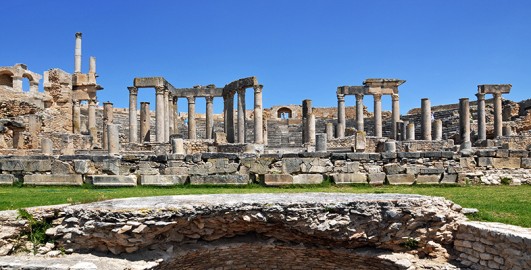 free course icon
level 2: intermediate icon
free course icon
level 2: intermediate icon
Education & Development
Using film music in the classroom
There are many approaches to using film music in the classroom including: a focus on pupil experience; a focus on the structure of composition; a focus on the relationship between music and image. This free course, Using film music in the classroom, explores them all.
 free course icon
level 1: introductory icon
free course icon
level 1: introductory icon
History & The Arts
Welsh history and its sources
This free course, Welsh history and its sources, is a teaching and learning resource for anyone interested in Welsh history. It contains study materials, links to some of the most important institutions that contribute to our understanding of the history of Wales, and a pool of resources that can help you understand Welsh history and the way it ...
 free course icon
level 2: intermediate icon
free course icon
level 2: intermediate icon
History & The Arts
History of reading: An introduction to reading in the past
This free course, History of reading: An introduction to reading in the past, consists of a series of essays, drawn from material contained in the Reading Experience Database, that illustrate different aspects of reading in Britain during the period from 1450 to 1945. These essays are designed for you as the reader to dip in and dip out, ...
 free course icon
level 2: intermediate icon
free course icon
level 2: intermediate icon
History & The Arts
Exploring the English language
How has the English language changed over the course of the last 500 years? What are the social and political contexts that have affected how these changes have come about? This free course, Exploring the English language, will consider the development of the English language from the 15th to the 19th century.
 free course icon
level 2: intermediate icon
free course icon
level 2: intermediate icon
History & The Arts
Music and its media
This free course, Music and its media, examines some of the main ways in which music is transmitted. It considers how the means of communicating a particular piece can change over time; and how the appearance and contents of a source can reflect the circumstances in which it is produced. The course focuses on three examples of musical media that...
 free course icon
level 2: intermediate icon
free course icon
level 2: intermediate icon
History & The Arts
History of reading tutorial 2: The reading and reception of literary texts – a case study of Robinson Crusoe
How have famous books been read and received by audiences in the past? This free course, History of reading tutorial 2: The reading and reception of literary texts a case study of Robinson Crusoe, is the second tutorial in a series designed to help users of the UK Reading Experience Database (UK RED) search, browse and use this resource, and ...
 free course icon
level 3: advanced icon
free course icon
level 3: advanced icon
History & The Arts
Voice-leading analysis of music 3: the background
The music of Mozart has been used to examine the foreground and middleground of harmony in free courses AA314_1 and AA314_2. In this free course, Voice-leading analysis of music 3: the background, you will use Beethoven's Eighth Symphony to consider the largest-scale stage of voice-leading analysis.
 free course icon
level 3: advanced icon
free course icon
level 3: advanced icon
History & The Arts
Helen Langdon's ‘Caravaggio’
Accounts of Caravaggio's life are filled with suggestions of murder and intrigue. But does knowing more about this dark artist's experiences help us to interpret his art? Or does understanding his motivations cloud their true meaning? This free course, Helen Langdon's 'Caravaggio', explores the biographical monograph, one of the most common ...
 free course icon
level 3: advanced icon
free course icon
level 3: advanced icon
History & The Arts
Exploring a Romano-African city: Thugga
From Rome to Pompeii and Ephesus the excavation of Roman remains is well known, but what of Roman remains in Africa? This free course, Exploring a Romano-African city: Thugga, looks at the Roman city of Thugga and examines the influence that Roman architecture and art had on Africa and its people.
 free course icon
level 3: advanced icon
free course icon
level 3: advanced icon
History & The Arts
Voice-leading analysis of music 2: the middleground
This free course, Voice-leading analysis of music 2: the middleground, continues our examination of 'voice-leading' or 'Schenkerian' analysis, perhaps the most widely used and discussed method of analysing tonal music. In this course, this method is explained through the analysis of piano sonatas by Mozart. The course is the second in the AA314 ...
 free course icon
level 3: advanced icon
free course icon
level 3: advanced icon
History & The Arts
Voice-leading analysis of music 1: the foreground
This free course, Voice-leading analysis of music 1: the foreground, introduces 'voice-leading' or 'Schenkerian' analysis, perhaps the most widely used and discussed method of analysing tonal music. In this course, this method is explained through the analysis of piano sonatas by Mozart. The course is the first in the AA314 series of three ...
 free course icon
level 3: advanced icon
free course icon
level 3: advanced icon
History & The Arts
Reception of music in cross-cultural perspective
Music is created to be performed, in most cases for an audience, whether in a concert hall, at a street fair or through a radio. But how those listeners receive a piece or style of music influences future music production. This free course, Reception of music in cross-cultural perspective, explores how audience reception, changing social ...